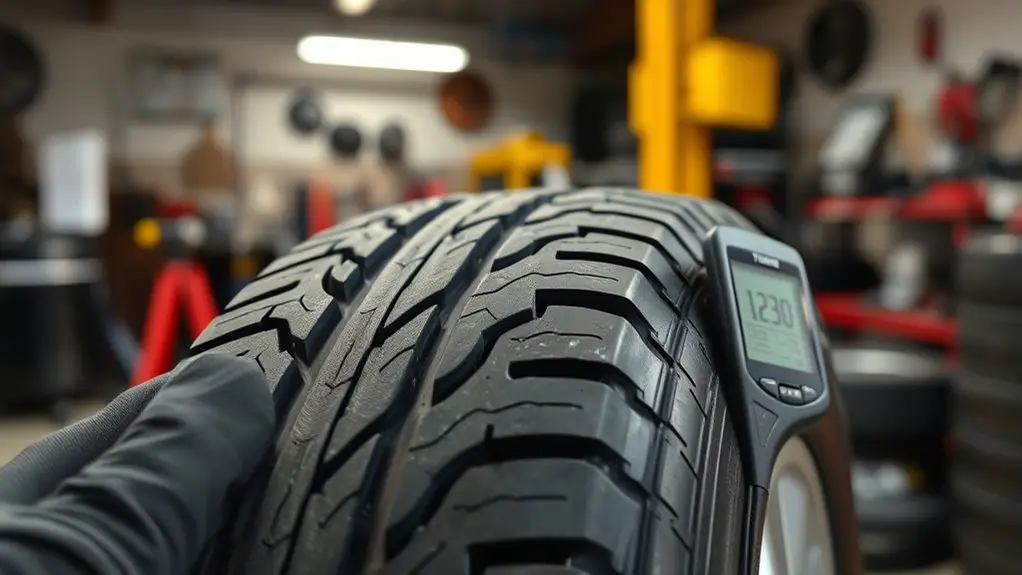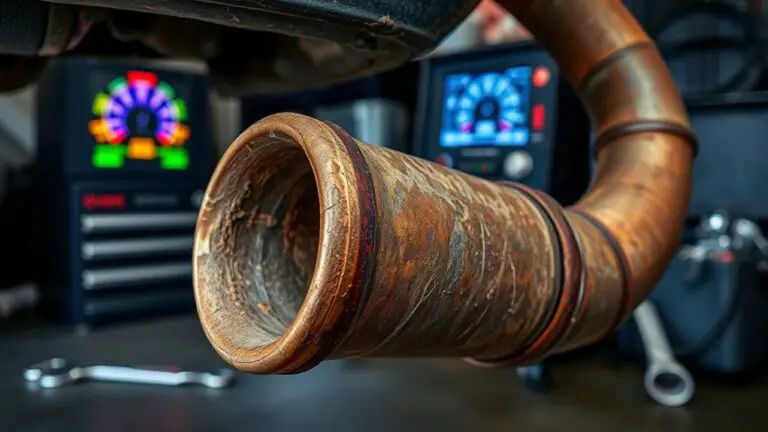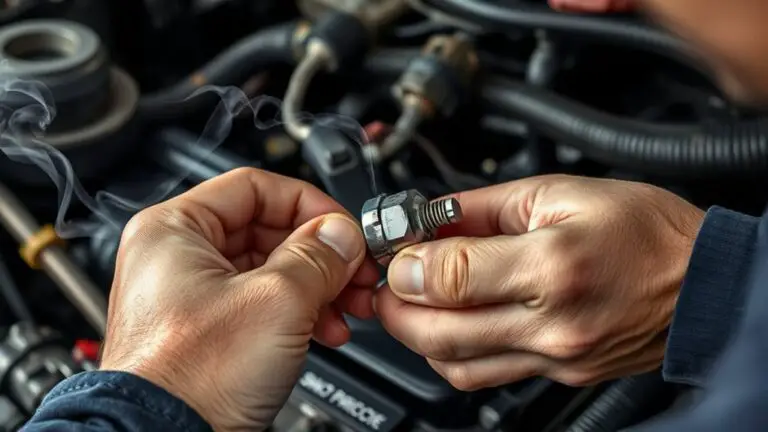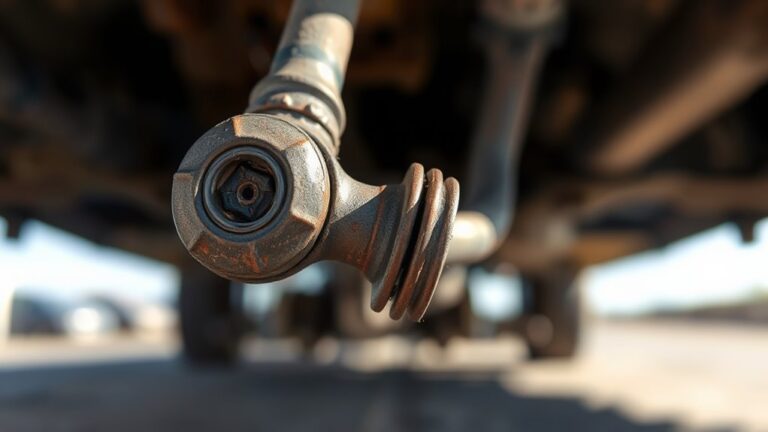TPMS Troubleshooting: Causes of Tire Cupping and Fixes
TPMS data helps you spot cupping caused by improper inflation, misalignment, or worn suspension. Start by checking current pressures against spec with a calibrated gauge, review TPMS history for recent changes, and note ride feel or vibration. Inspect tires for cupping patterns—alternating highs and lows—and verify camber, toe, and worn bushings or shocks. Correct inflation, realign if needed, replace worn components, and rebalance. By tightening these factors, you’ll reduce cup wear; more details follow.
What Tire Cupping Looks Like and How It Happens
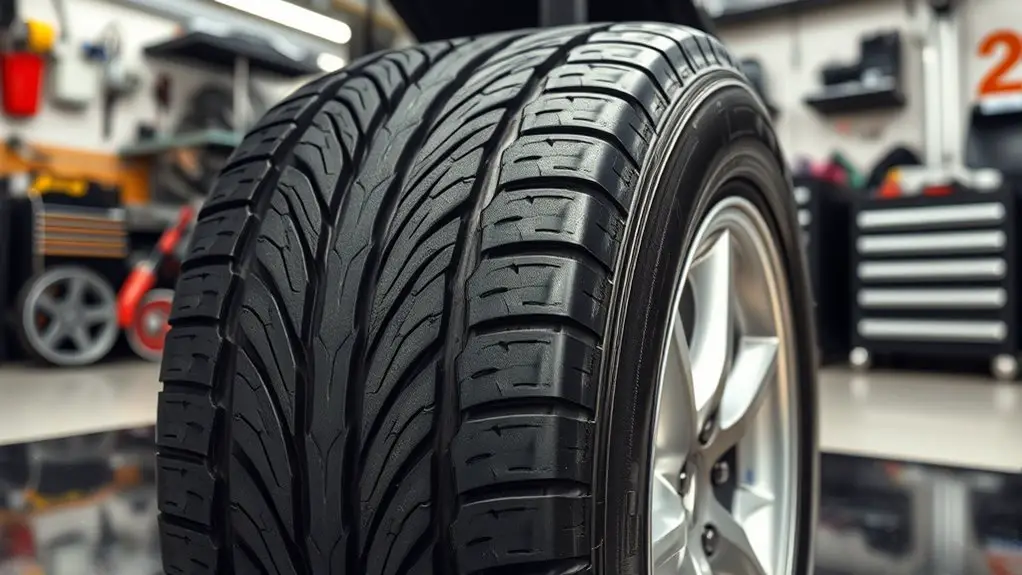
Tire cupping presents as uneven wear on the tread, with shallow, cup-shaped dips across the tire surface and pronounced scalloping along the edges. You’ll notice sporadic depressions and feathered bands that disrupt uniform contact with the road. In practice, cupping forms from repeated load shocks, misalignment, or irregular suspension dynamics, which alter tire patch distribution cycle after cycle. You should inspect tread wear patterns across all four tires to distinguish cupping from simple wear. Look for alternating high-low ridges and consistent cup shapes, not random lacerations. Diagnostic clues include audible or subtle changes in noise levels as you roll, and a rebound feel when you push the tire with moderate force. To prevent progression, correlate cupping with steering play, worn suspension components, and alignment specs. Understanding tire patterns helps you anticipate handling changes, diagnose root causes, and pursue targeted fixes without overhauling your driving freedom.
The Role of Tire Pressure and TPMS in Cupping
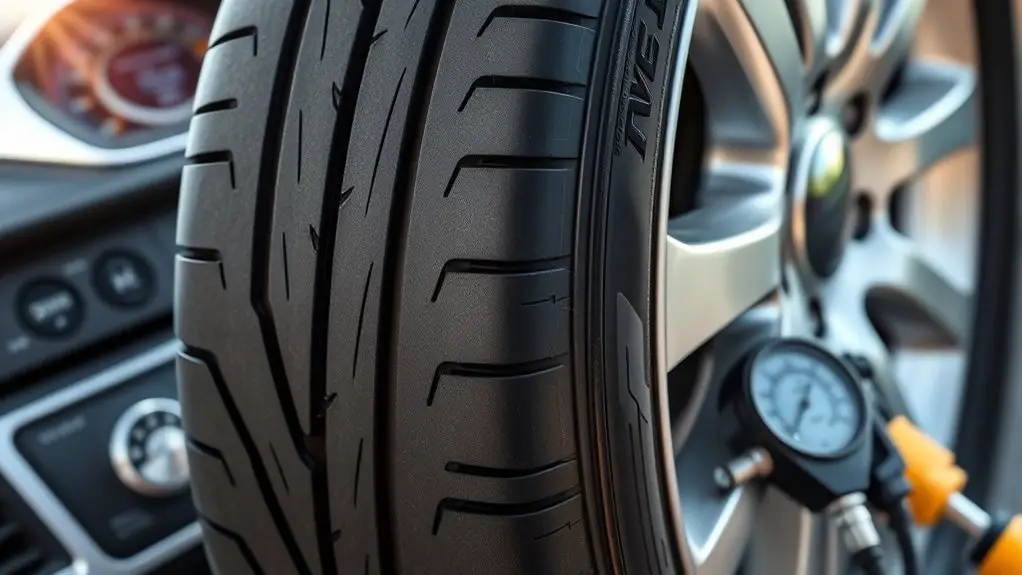
Even when cupping is evident, the role of tire pressure and TPMS data is central to diagnosis and correction: underinflation can exaggerate cup shapes by increasing contact patch stiffness and edge loading, while overinflation shifts wear to the center and can mask the true wear pattern. You assess current pressure with a calibrated gauge and compare to vehicle spec, noting any seasonal or cargo-related changes. TPMS function informs you whether a pressure deviation is recent or chronic, guiding your trim decisions. With underinflation, you’ll see pronounced shoulder wear and louder cupping signals; overinflation may produce a convex center wear signature that hides other issues. Balance is critical: maintain target pressure within tolerance, then recheck alignment of tread contact. Document pressure history alongside ride feel and vibration cues. Use tire pressure data as a baseline, and let tpms function verify sustained stability before pursuing further corrective steps.
Alignment Issues That Contribute to Uneven Wear
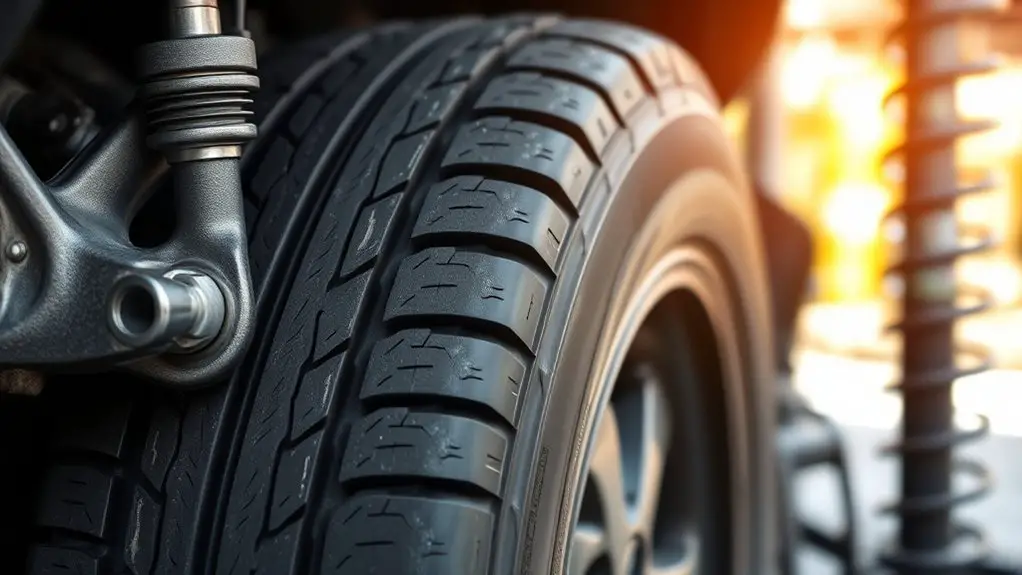
Alignment issues can drive uneven wear even when tires are properly inflated. You’ll diagnose by checking how the suspension and steering geometry set the tire contact patch. Camber angle determines whether the tires lean inward or outward; excessive camber creates edge wear or inner tread cupping, while too little camber reduces cornering grip. Toe adjustment controls the toe-in or toe-out posture, shaping how tires scrub along the road during straight runs and turns. Small deviations matter: a misadjusted camber or toe can amplify cupping and accelerate wear on specific tread zones, even with correct inflation. To diagnose, start with a precise wheel alignment procedure or use a calibrated alignment rack, then compare measured angles to the manufacturer’s specifications. Inspect tire wear patterns across shoulders and center, correlating with camber and toe readings. Correcting these angles not only evenizes wear but improves steering feel and fuel efficiency, supporting a longer tire life and safer performance.
Suspension Problems That Affect Tread Contact
Suspension issues can shift tread contact, so you’ll want to assess alignment impacts and how worn bushings alter wheel geometry. Watch for signs that dampers are degrading, since that wear concentrates load and changes contact patterns. Start with a concise diagnostic checklist: verify alignment, inspect bushings for play, and evaluate damper condition to gauge their effect on tread contact.
Alignment Impacts Contact
Misalignment directly alters how the tire contact patch sits on the road, changing load distribution across the tread and steering response. You’ll notice subtle shifts in wear patterns and handling cues as alignment angles diverge from ideal. Diagnose by inspecting toe, camber, and caster references against factory specs, then verify with precise measurements and test drives. Misalignment alters how the patch meets pavement during braking, acceleration, and cornering, affecting cupping tendencies and noise resonance. Before tire rotation, confirm consistent contact width across the footprint; uneven loading signals corrective action. Corrective steps depend on the chassis and suspension design, but typically involve adjusting alignment angles via shims or suspension correction bolts while preserving geometry integrity. After adjustment, recheck tire rotation balance and re-evaluate wear over several hundred miles.
Worn Bushings Wear
Worn bushings can alter how the suspension articulates, changing load transfer and the tire’s contact with the road. You’ll notice uneven camber changes, subtle toe shifts, and reduced control during braking—signs that wheel motion isn’t being damped evenly. Diagnose by testing for play at control arms and cradle mounts, and quantify with simple suspension excursion checks. If you confirm worn bushing effects, plan for timely bushing replacement to restore consistent tread contact and load paths. Prioritize quality bushings, correct torque, and alignment recheck after install to maintain TPMS readings and performance.
| Metric | Symptom/Check | Action |
|---|---|---|
| Play | Audible clunk, feel at wheel | Inspect and replace worn bushings |
| Movement | Excess excursion | Measure and secure mounting points |
| Alignment | Toe/camber drift | Re-align after replacement |
| Torque | Loose fasteners | Re-torque per spec |
| Road feel | Vague steering | Confirm bushing integrity |
Damper Wear Concern
Damper wear can quietly degrade tread contact by allowing excessive wheel movement under load, which blurs input signals from the road and reduces suspension stiffness where it matters most. You’ll sense erratic height, increased pitch, and flickering TPMS responses as damping performance declines. Focus on diagnostic checks: compare ride height consistency, measure rebound and compression speed, and test for stickiness or metal-to-metal noise. Damper types vary in damping curves, hardware, and mounting, so identify the specific design before evaluating wear. Damper maintenance is proactive: inspect seals for leaks, test with a controlled bounce, and replace when motion exceeds spec. Don’t overlook related suspension joints, as worn linkages amplify damping deficiencies. Record findings, plan targeted repairs, and restore predictable tire contact, steering feel, and overall tire lifespan.
Tire Inflation Habits and Their Impact on Wear
Proper inflation is foundational to tire wear patterns and overall handling: overinflation and underinflation create distinct, measurable effects on tread contact, heat buildup, and single-point wear. You’ll notice that tire pressure directly shapes contact patch size and pressure distribution across the tread. Maintaining correct pressure reduces cornering variability and preserves even wear patterns across the footprint. Overinflation concentrates load toward the center of the tread, increasing wear there and heightening heat buildup, which accelerates stiffness and reduces grip. Underinflation expands the contact patch sideways, elevating shoulder wear and accelerating heat at the edges, potentially causing cupping over time. Regular checks, ideally weekly, establish a reliable baseline for your vehicle’s recommended tire pressure and load. Use a high-accuracy gauge, compare with vehicle placard values, and adjust after cold parking to avoid transient readings. Consistent tire pressure supports predictable handling, minimizes irregular wear patterns, and enhances efficiency without compromising safety or comfort.
Diagnosing Cupping: Checks You Can Do at Home
Cupping is a telltale wear pattern tied to suspension dynamics and tire contact quality, and you can verify it at home with a focused checklist. Begin with tire rotation timing: rotate wheels front to rear, then recheck wear symmetry after 2–3 weeks to rule out spot wear. Perform a visual inspection for pattern consistency across all tires—look for alternating high and low spots, sharper edges, or scalloped ridges. Check tread depth with a uniform gauge across the circumference; cupping typically shows irregular depths rather than a flat wear line. Inspect alignment indicators visually: steering wheel stance, pull, or uneven tire wear hints at improper camber or toe. Examine suspension and wheel bearing play by hand: roughness or movement can point to worn components contributing to cupping. Confirm tire pressure is within spec during each inspection, as under- or overinflation can exaggerate cupping patterns. Document findings and compare before/after rotation to isolate root causes.
Professional Fixes and Preventive Maintenance for Smoother Rides
To deliver a smoother ride, focus on targeted professional fixes and a preventive maintenance routine that keeps suspension components within spec. You’ll implement precise alignments, inspect wheel bearings, and replace worn bushings or shocks before cupping worsens. Schedule torque checks, inspect control arms, and confirm tire and rim runout are within tolerance. Use a diagnostic mindset to verify TPMS sensor health and harmonize alignment, camber, and toe with manufacturer specs. Prefer preventative measures over reactive repairs, and document every adjustment to build a data trail you can trust.
| Column A | Column B |
|---|---|
| Professional fixes | Preventive measures |
| Alignment and suspension parts | Routine checks and maintenance tips |
| Sensor and tire interface | Calibration and documentation |
In practice, stick to maintenance tips like regular balance, tire rotation, and timely part replacement. This disciplined approach minimizes cupping recurrence and preserves ride quality.
Frequently Asked Questions
How Does Wheel Alignment Influence Cupping on Different Tire Brands?
Alignment helps control cupping, but its effect varies by brand due to tire construction. You’ll see less cupping when your wheel is within spec and suspension isn’t misaligned, yet some brands tolerate mild misalignment better than others. Keep tire pressure consistent to avoid exaggerated states, and monitor tread wear patterns across brands. If one brand cups under slight alignment offsets, you’ll notice higher vibration and uneven wear. Diagnose with precise toe/camber checks and compare tread wear.
Can Road Conditions Cause Cupping Despite Proper TPMS Readings?
Yes, road conditions can cause cupping even with proper tire pressure readings. You’ll want to inspect road surface irregularities, potholes, and rough patches that transmit impact load differently across the tread. Keep monitoring tire pressure, since minor losses alter contact patterns. Diagnose cupping by correlating wear patterns with tire pressure history and driving routes, adjusting suspension components if needed, and prioritizing smoother surfaces or slower speeds on rough roads to minimize ongoing cupping.
Does Tire Rotation Timing Affect Cupping Progression Long-Term?
Rotation timing does affect cupping progression long-term. You should align tire maintenance with proper rotation frequency to even wear, reduce cupping acceleration, and preserve balance. If you rotate too infrequently, cupping can worsen; too often may not yield larger benefits. Track wear patterns, adjust rotation schedule, and monitor TPMS data for anomalies. You’ll gain diagnostic clarity by correlating tread depth changes with rotation timing and ensuring consistent contact patches across all tires.
Are There Warning Signs Before Visible Cupping Appears on Tread?
Yes—there are warning signs before visible cupping appears. You’ll notice uneven tread wear developing as you monitor tire pressure and ride feel. Look for micro-vibrations, slight steering pull, and early heat buildup after highway runs. Regularly check for localized patch wear and irregular contact patterns. Address pressure imbalances promptly, rotate on schedule, and inspect suspension components. Early diagnostics keep you ahead, sustaining tire pressure consistency and preventing pronounced tread wear before cupping shows.
Can Aftermarket Suspension Upgrades Worsen or Prevent Cupping Patterns?
Aftermarket suspension upgrades can influence cupping, but neither inherently fix nor guarantee it. If you’re seeking freedom in handling, you’ll evaluate suspension stiffness and how it interacts with road input. Excess stiffness can worsen cupping by transferring impacts; too soft can allow uneven wear. Start with alignment adjustments, then test, monitor wear patterns, and iterate. You’ll want precise damping, balanced tire load, and consistent tire rotation to minimize cupping tendencies.

